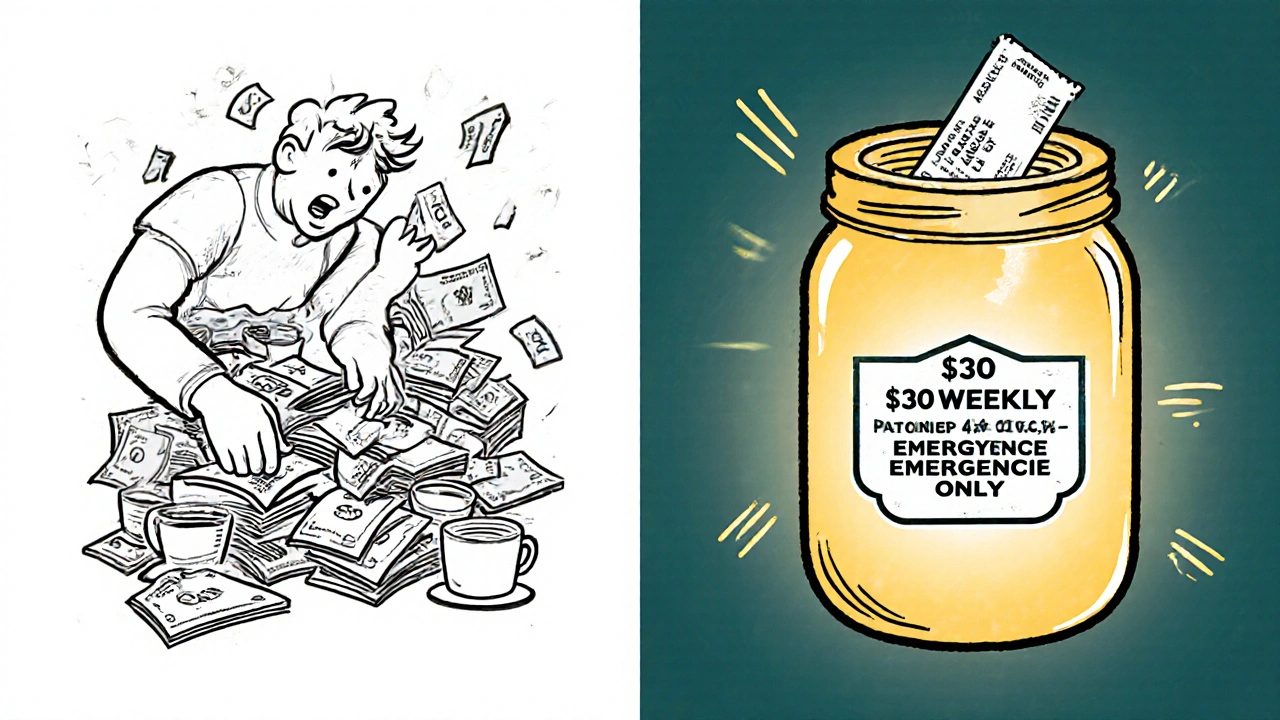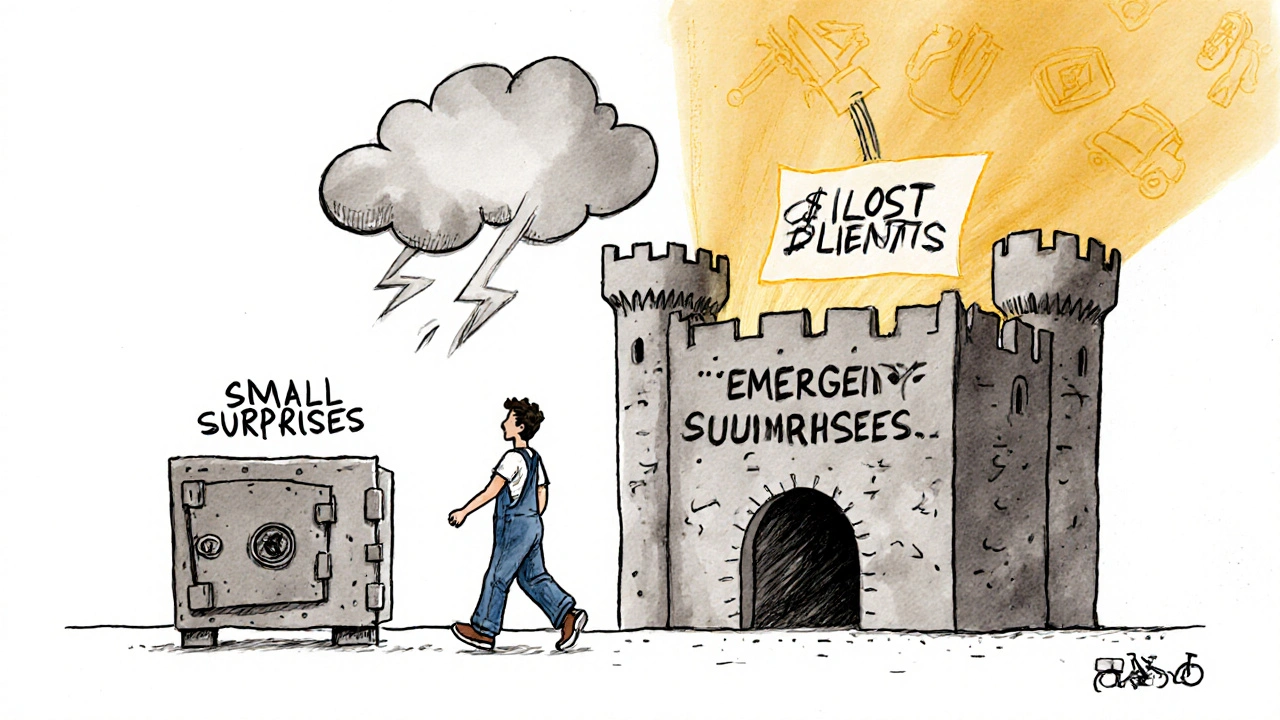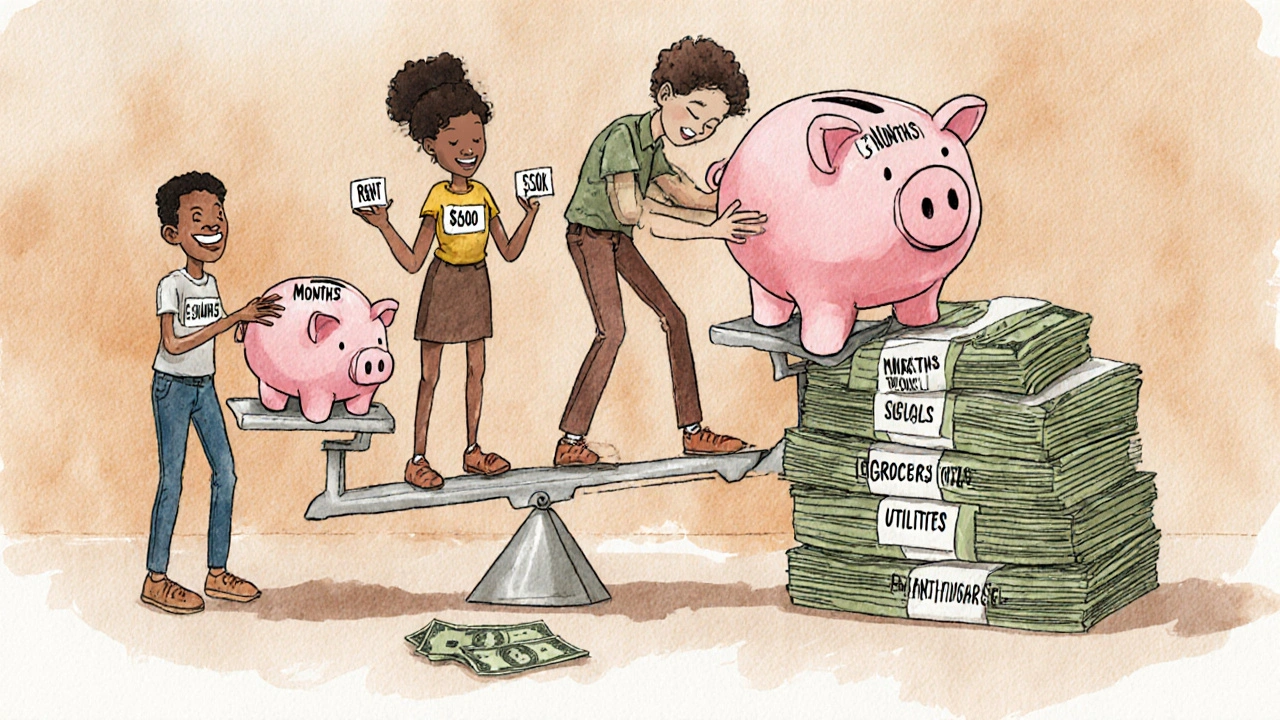Emergency Fund Calculator
Calculate Your Personalized Emergency Fund
Based on your actual essential expenses and life situation
$
$
$
$
$
$
Your Recommended Emergency Fund
$0
This is the amount you should aim for to cover your essential expenses.
Important: This is based on your input and current situation.
Most people hear emergency fund and think: three to six months of expenses. It’s repeated everywhere-from podcasts to financial blogs to your well-meaning aunt at Thanksgiving. But here’s the truth: that number isn’t magic. It’s a starting point. And if you’re making $35,000 a year in Asheville, trying to save $18,000 for an emergency fund feels less like smart planning and more like a fantasy.
Why 3-6 Months? It’s Not Arbitrary
The idea of saving three to six months of living expenses didn’t come from a finance genius in a boardroom. It came from real people getting crushed by unexpected bills. In the 1990s, credit counselors and financial educators noticed a pattern: when people lost a job or faced a medical emergency, those without savings turned to credit cards, payday loans, or family debt. The 3-6 month rule was created to give people breathing room-not to get rich, but to avoid financial collapse. It’s not about how much you make. It’s about how much you spend. Your emergency fund should cover rent, groceries, utilities, insurance, transportation, and essential healthcare-not your Netflix subscription or weekend dinners out. A 2023 Fidelity study found that 92% of major banks and credit unions still recommend this range, but that doesn’t mean it fits everyone.Who Needs 3 Months? Who Needs 6? Or Even 9?
There’s no one-size-fits-all number. Your situation determines your target.- 3 months is enough if you’re a renter with a steady paycheck, no kids, and a safety net-like family who can help if you’re stranded.
- 6 months is the new baseline if you have a mortgage, kids, or even just one income stream. If you’re the only one bringing in money and your spouse stays home, or you work in a field where layoffs are common, this is your floor.
- 9 months or more? That’s for freelancers, gig workers, or anyone with unpredictable income. If you drive for DoorDash or run your own HVAC business, your income swings month to month. You need more cushion.
Forget Income. Focus on Expenses.
A lot of people get this wrong. They think, “I make $5,000 a month, so I need $15,000 to $30,000.” But you don’t need to replace your entire income. You need to replace your essential spending. Look at your bank statements from the last three months. Add up only what you spent on:- Housing (rent or mortgage + utilities)
- Food (groceries, not dining out)
- Transportation (gas, car insurance, bus pass)
- Healthcare (meds, co-pays, insurance premiums)
- Minimum debt payments
- Childcare or elder care (if applicable)
Where to Keep It-And Where NOT to Keep It
Your emergency fund isn’t an investment. It’s insurance. That means it needs to be:- Easy to access-no waiting 3-5 days for a transfer.
- Safe-no risk of losing value.
- Separate-not mixed with your checking account.
- Your checking account (you’ll spend it)
- A Roth IRA (you’ll be tempted to withdraw for non-emergencies)
- Stocks or crypto (they can drop 20% in a week)
- A CD (you’ll get penalized if you need the money early)

Start Small. Really Small.
If you’re reading this and thinking, “I can’t even save $500,” you’re not alone. Bankrate’s 2023 survey found that 59% of Americans couldn’t cover a $1,000 emergency. That’s not failure. That’s the system. Wells Fargo and NerdWallet both say: start with $500. Then $1,000. That’s your first win. Why? Because $1,000 can cover:- A broken water heater
- A car repair
- A vet bill for your dog
- A lost paycheck while you wait for unemployment
What If You’re Just Getting By?
If you’re a single parent making $32,000 a year and rent takes 52% of your income, the 3-6 month rule feels cruel. And honestly? It is-if you treat it as a rigid target. The Consumer Financial Protection Bureau says: “Think about the most common kind of unexpected expenses you’ve had in the past.” That’s the real rule. Look at your last year. What emergencies came up? A tire blowout? A prescription you couldn’t afford? A broken appliance? Add those up. That’s your real baseline. Maybe you only need $2,000 to feel safe. Build to that. Then add more when you can. Also, don’t ignore insurance. A $1,000 deductible on your health plan? Make sure you can cover it. Disability insurance? If you can’t work for three months, do you have a backup? That’s part of your emergency plan too.Common Mistakes (And How to Avoid Them)
- Mistake: Using your emergency fund for vacations or a new phone. Solution: Name the account something like “DONT TOUCH-EMERGENCY ONLY.”
- Mistake: Waiting until you have “enough” to start. Solution: Start today with $20. That’s one coffee you don’t buy.
- Mistake: Putting it in a low-interest account. Solution: Move it to a high-yield savings account in under 10 minutes.
- Mistake: Thinking once you hit your number, you’re done. Solution: Rebuild it every time you use it. Treat it like a monthly bill.


Comments (3)
Graeme C
Let’s be real-three to six months is a fantasy if you’re making $32k in rural America. I’m a single dad in Glasgow working two shifts just to keep the lights on. My emergency fund? $800. And yeah, that’s all I’ve got. But guess what? That $800 covered my kid’s dentist bill last month when the NHS waitlist hit six months. You don’t need a six-figure buffer-you need a buffer that works for your reality. Start with $500. Automate $20 a week. Name it ‘DONT TOUCH’ and stick to it. That’s not financial advice-that’s survival.
And stop telling people they’re lazy because they can’t save $15k. The system is rigged. Your emergency fund isn’t a trophy. It’s a lifeline. And lifelines come in all sizes.
High-yield savings? Yes. Roth IRA? No. Checking account? Absolutely not. Ally pays 4.5%. Move it. Today. Not tomorrow. Today.
Astha Mishra
While I deeply appreciate the pragmatic tone of this post, I find myself reflecting on the deeper philosophical underpinnings of what an emergency fund truly represents-not merely a financial tool, but a psychological sanctuary. In a world where precarity is normalized and the gig economy has dismantled the illusion of stability, the act of saving-even $500-becomes an act of radical self-respect.
Consider the woman in Ohio who slept better after her car died. That’s not just financial security-that’s sovereignty over chaos. It’s the quiet rebellion against a culture that tells us to consume, to hustle, to perform productivity even when our bodies are breaking. Her $2,000 wasn’t just money-it was dignity.
And yet, in India, where social safety nets are threadbare and family is often the only insurance, the concept of an ‘emergency fund’ must be reimagined. Is it still a bank account, or is it the aunt who’ll take you in, the neighbor who lends rice, the cousin who can fix your bike? Perhaps the true emergency fund is community. But since we’re told to individualize everything-even survival-we’re left to build our own sanctuaries, brick by brick, $10 at a time.
So yes, move your money to Ally. Automate $30 a week. But don’t forget: the real emergency isn’t the broken water heater. It’s the loneliness of having to survive alone. Save your money. But never stop saving each other.
And yes, I misspelled ‘sanctuary’ as ‘sancutary’-I’m tired. And sometimes, perfection is the enemy of progress.
Kenny McMiller
Bro, this is 100% spot on. The 3-6 month rule is legacy finance BS. I’m a freelance dev in Austin, and my ‘emergency fund’ is actually two buckets: $1k for shit like a dead laptop or a missed payment, and $12k for when the whole client pipeline collapses-which happened last year for 5 months. I didn’t touch my Roth. Didn’t max out my credit. Just kept pitching, kept doing small gigs, kept eating ramen.
And yeah, I use a HYSA. Ally, 4.75%. Why? Because I’m not an idiot. Money sitting in a checking account? That’s not savings, that’s a dare.
Also, the ‘two fund’ model is the real MVP. One for micro-emergencies, one for macro. It’s like having a first aid kit and a full hospital. You don’t need both all the time, but when you need one, you need it BAD.
And if you’re making $35k and can’t save $1k? Then you’re not broke-you’re exploited. But that doesn’t mean you’re weak. It means the system’s broken. So start with $20. Buy one less coffee. Set up auto-transfer. Do it now. Not ‘when I have more.’ When you have less, you learn to move faster.
Also-stop using your emergency fund to buy a new phone. That’s not an emergency. That’s a craving. Name your account ‘DONT TOUCH’ or I swear to god I will find you and take your debit card.